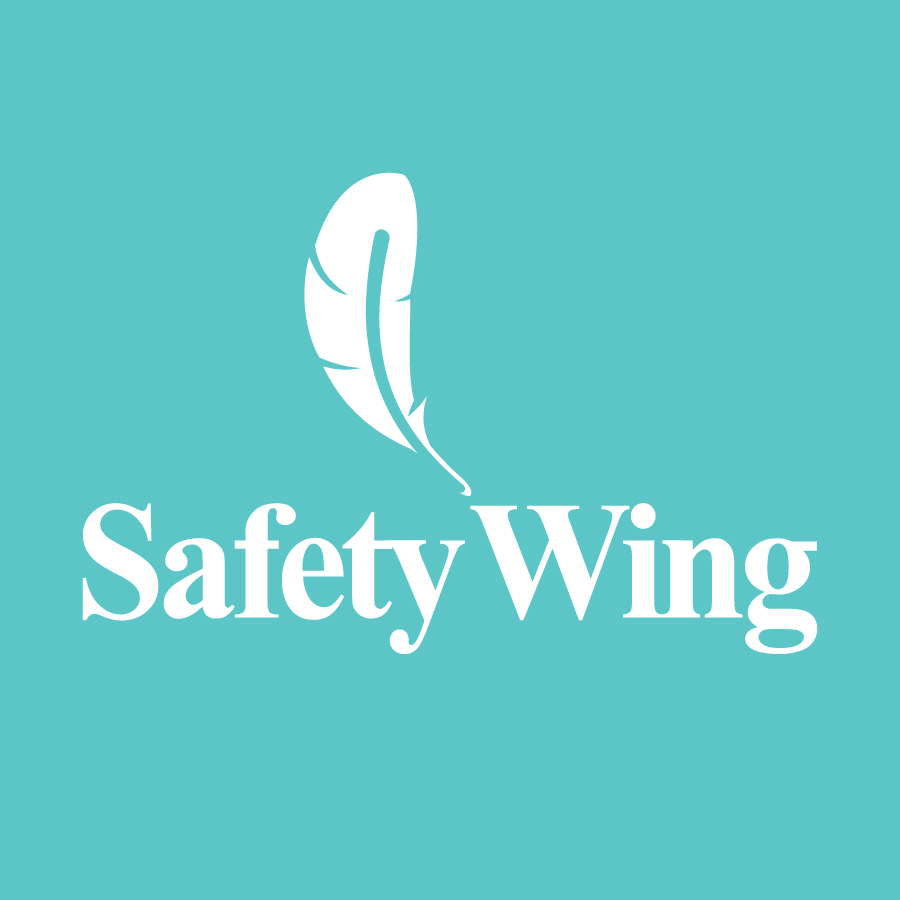
Digital Nomads – 5 Best Places
in Canada
The 5 Best Places for Digital Nomads in Canada
Are you looking for the perfect spots in Canada to set up your laptop and work remotely? This article will guide you through The 5 Best Places for Digital Nomads in Canada, highlighting top destinations with excellent internet connectivity and expat communities.
You’ll discover cities that offer a mix of affordable living, cultural experiences, and reliable Wi-Fi speeds, making them ideal for remote work. No matter if you’re a seasoned digital nomad or just starting, you’ll find valuable information to help you choose your next destination in Canada.

As a travel enthusiast and photographer from the UK. I have a passion for nature and wildlife, I tend to focus on eco-tourism and sustainable travel but like to cover a wide range of articles. My favourite destination has got to be Malta, I love the food there and the relaxing nightlife of Silema is my happy place!
Affiliate Disclosure: Some of the links on our site are affiliate links, meaning, at no additional cost to you, we may earn a commission if you click through and make a purchase. This helps us to continue providing valuable content and supports our efforts in bringing the travel community together. We only recommend products and services we believe in and think you’ll find useful. Complete details are included in our affiliate disclaimer. Thank you for your support!
In a Hurry? Here's our Key Info for This Article
- Vancouver offers a mix of urban convenience and natural beauty
- Montreal is known for its cultural diversity and arts scene
- Calgary provides a great mix of urban life and outdoor activities
- Victoria is ideal for those looking for a peaceful, coastal environment
- Halifax combines historical charm with a growing tech scene
Stay Connected
Things to Do
Essential Apps
Surfshark VPN
Stay safe online and continue accessing all your services just like back home.
Budget Tips
What is a Digital Nomad?
A digital nomad is someone who leverages technology to work remotely while travelling. You might find them tapping away on laptops in cafes, co working spaces, or even beach side bungalows. Their lifestyle often involves working freelance or for companies that allow for remote work, enabling them to explore new places without being tied to a traditional office. This lifestyle appeals to those who crave adventure and flexibility.
A prime example of this can be found in the multitude of Swedish digital nomad hotspots. Here, you can balance work with exploring local culture and natural beauty, all while maintaining a professional routine. This nomadic lifestyle requires discipline, a reliable internet connection, and a knack for adapting to new environments.
Other Work Remotely in North America
The 5 Best Places for Digital Nomads in Canada
| Destination | Best for | Best Time to Visit | Average Wifi Speeds |
|---|---|---|---|
| Toronto | Urban lifestyle | April to October | 50 Mbps |
| Vancouver | Outdoor activities | March to October | 55 Mbps |
| Montreal | Cultural experiences | May to September | 45 Mbps |
| Ottawa | Historical sites | May to October | 40 Mbps |
| Calgary | Proximity to nature | June to September | 50 Mbps |
1. Toronto
Toronto, Canada‘s largest city and one of Canada’s 5 best places for digital nomads, is a melting pot of cultures, offering diverse experiences from towering skyscrapers to waterfronts.
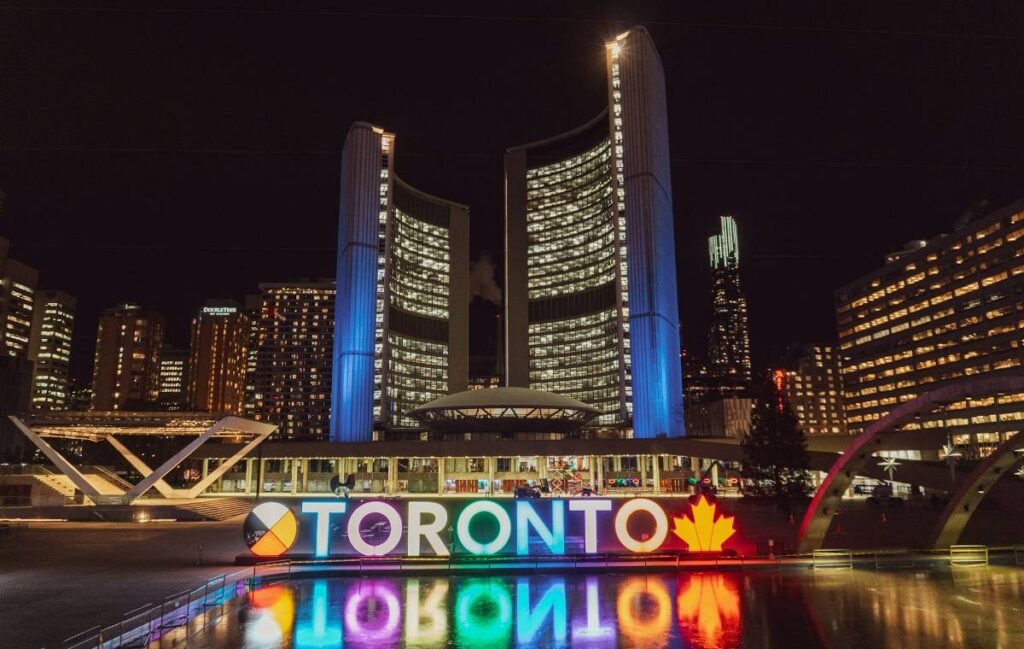
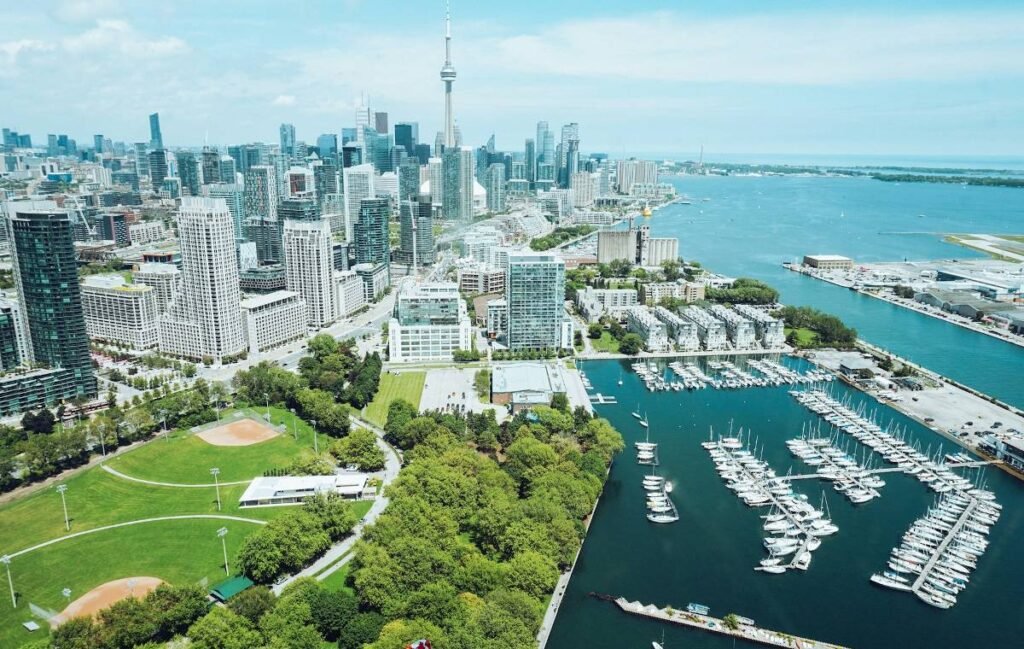
Top Attractions
You must visit the CN Tower, which offers panoramic views of the city from its observation deck and the thrilling EdgeWalk. For museum enthusiasts, the Royal Ontario Museum and the Art Gallery of Ontario are indispensable. The Distillery District is a fantastic spot for art galleries, boutiques, and cafes, perfect for an afternoon stroll. If you enjoy nature, High Park offers trails, a zoo, and beautiful cherry blossoms in spring. Don’t miss the Toronto Islands, a short ferry ride away, boasting beaches and bike paths. The iconic St. Lawrence Market is ideal for sampling local produce and gourmet delights.
Best Time to Visit
June through September is the best time to visit Toronto, offering warm weather and numerous festivals. Winter can be cold, but it’s perfect for those who enjoy ice skating and winter sports. Spring and fall provide milder temperatures and fewer tourists.
Local Cuisines
Toronto’s culinary scene is as diverse as its population.
– Poutine: French fries topped with cheese curds and smothered in gravy.
– Peameal Bacon Sandwich: A uniquely Canadian take on a bacon sandwich, often served on a bun.
– Butter Tarts: A sweet pastry filled with a buttery, sugary filling.
– Dim Sum: Reflecting the city’s large Chinese community, you can find excellent dim sum in Chinatown.
Budgeting for Toronto
Accommodation prices can vary, with budget options starting around $50 per night, mid-range hotels averaging $150, and high-end hotels reaching $400. A meal at a mid-tier restaurant will set you back about $20-$40 per person. Toronto is generally affordable for digital nomads, especially considering the strong internet connectivity Canada boasts.
2. Vancouver
Vancouver, nestled between the Pacific Ocean and the Coastal Mountain range, is a city that offers a perfect mix of urban sophistication and natural beauty. It’s a haven for outdoor enthusiasts and a melting pot of cultures.
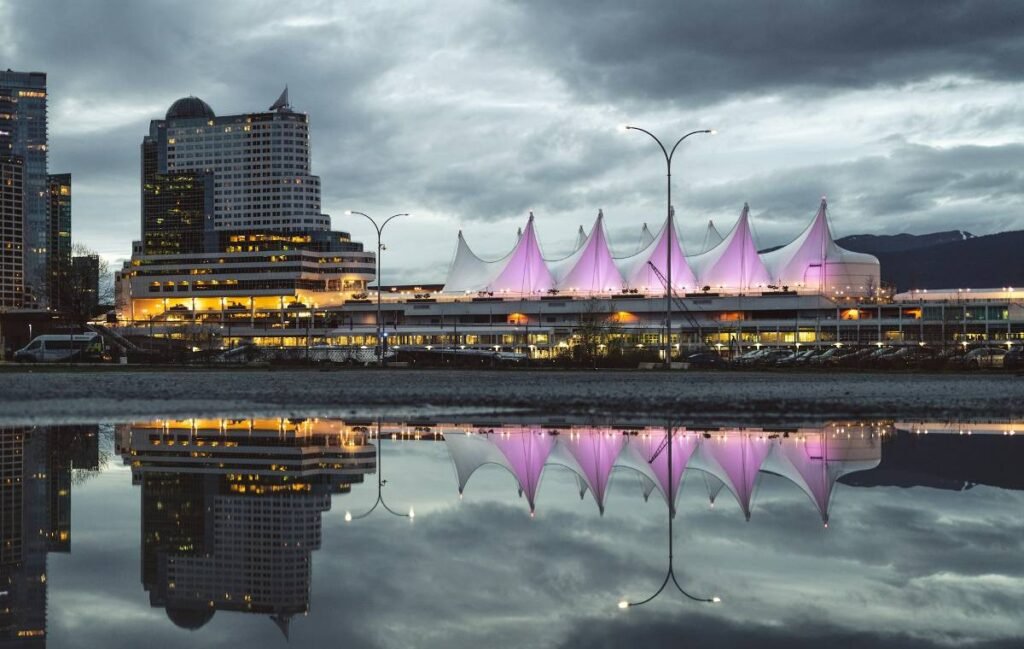
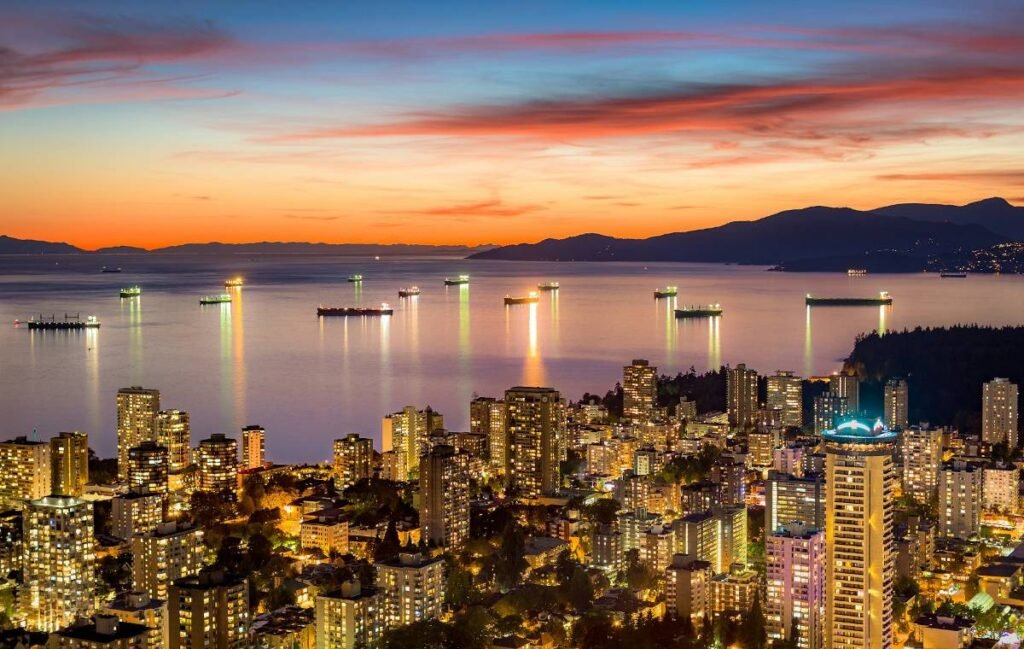
Top Attractions
Vancouver is brimming with attractions that cater to a diverse range of interests. Stanley Park, an urban oasis, offers picturesque trails, beaches, and the famous Seawall path. The Vancouver Art Gallery showcases a mix of contemporary and historical Canadian art, making it a must-visit for art aficionados.
For those keen on history, Gastown is the city’s oldest neighborhood, featuring cobblestone streets, unique boutiques, and the iconic Steam Clock. If you’re an adrenaline junkie, Grouse Mountain provides year-round activities, from skiing in winter to hiking and zip-lining in summer. And let’s not forget Granville Island, a busy market area where you can indulge in local crafts and freshly caught seafood.
Best Time to Visit
The best time to visit Vancouver is during the summer months, from June to September, when the weather is warm and dry. This period is ideal for outdoor activities and exploring the city’s natural beauty. However, be prepared for higher accommodation prices and larger crowds.
Local Cuisines
Vancouver’s cuisine is a delightful reflection of its multicultural population. Here are some must-try dishes:
– Sushi: Thanks to a significant Japanese community, Vancouver boasts some of the best sushi outside of Japan.
– Salmon: Freshly caught Pacific salmon, whether grilled, smoked, or in a burger, is a local favorite.
– Japadog: A unique fusion of Japanese flavors and hotdogs, offering toppings like teriyaki sauce and seaweed.
– Poutine: This Canadian classic of fries, cheese curds, and gravy is a must-try comfort food.
Budgeting for Vancouver
Vancouver can be a bit pricey. On average, expect to spend around $150-$250 per night for mid-range accommodation. Dining at a mid-tier restaurant will cost approximately $20-$40 per person. For those looking for more affordable destinations, you might find [Spain’s digital nomad hotspots](https://www.horizonjumpers.com/best-places-for-digital-nomads-in-Spain) an appealing alternative.
3. Montreal
Montreal boasts a unique mix of European elegance and North American dynamism, making it a standout destination for digital nomads.
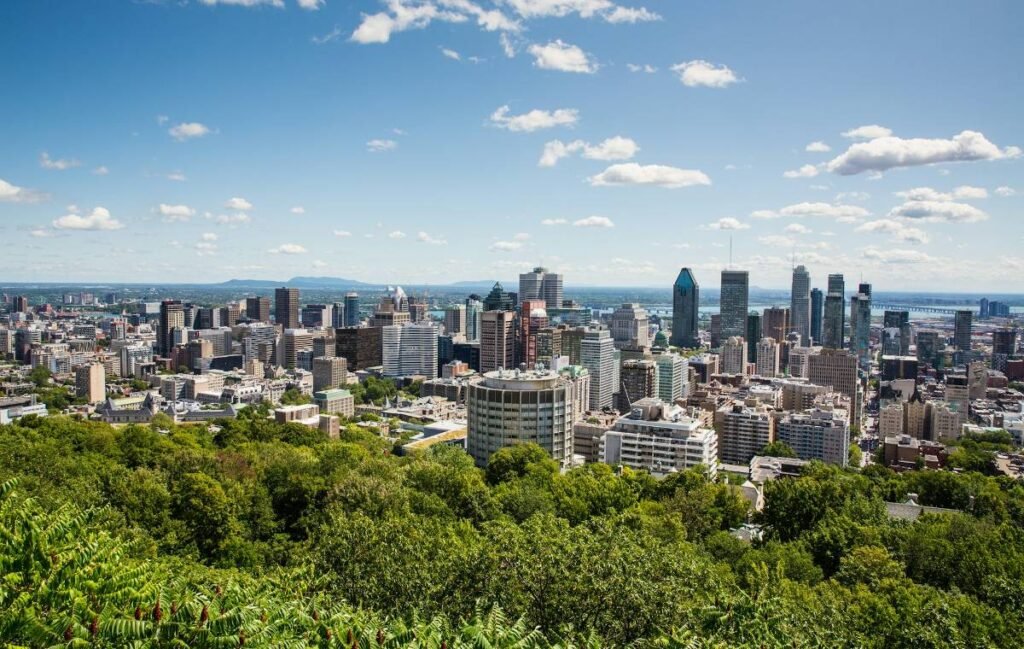
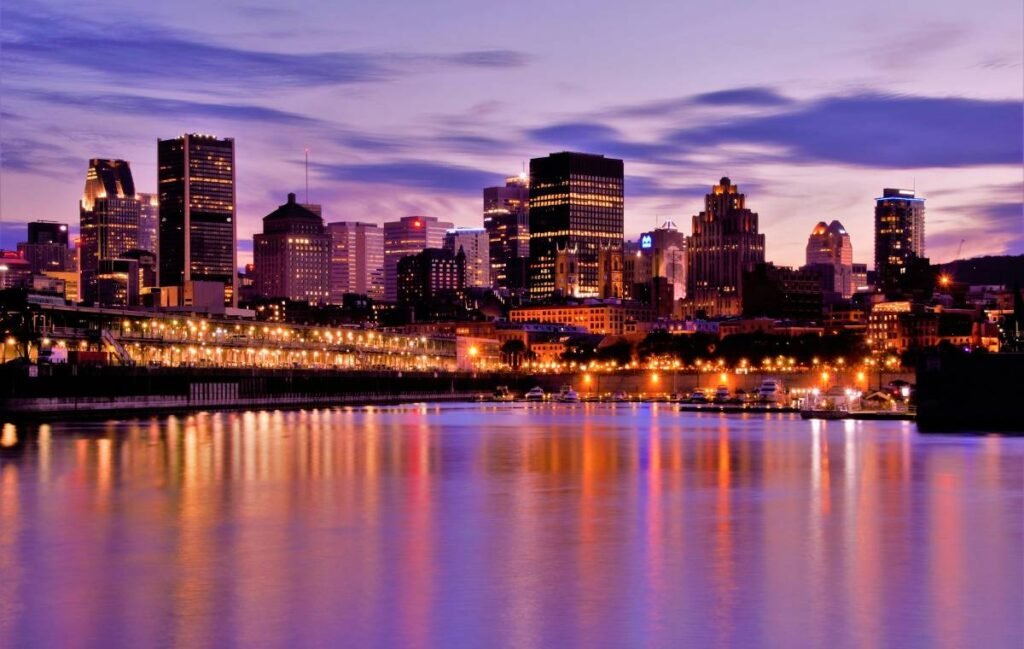
Top Attractions
Montreal is a treasure trove of attractions that cater to diverse interests. Start your exploration at Old Montreal, where cobblestone streets and historic architecture transport you back in time. The Notre-Dame Basilica, with its stunning interiors, is a must-visit. For art enthusiasts, the Montreal Museum of Fine Arts houses an impressive collection spanning centuries. Nature lovers will appreciate a stroll through Mount Royal Park, designed by Frederick Law Olmsted, the same landscape architect behind New York’s Central Park. If you’re into festivals, the International Jazz Festival and Just for Laughs are world-renowned events that light up the city annually. Montreal deserved to be captured, make sure you bring a camera with you to capture the spirit that is Montreal. The Insta360 is light and compact and will capture all the memories in 360 view.
Best Time to Visit
Montreal shines brightest from May to October, when the weather is mild and various festivals are in full swing. However, winter has its own charm with snowy landscapes and activities like ice skating. Keep in mind, winter can be quite harsh, so pack accordingly.
Local Cuisine
Montreal’s culinary scene is a melting pot of flavors. The city is particularly known for its unique takes on classic dishes. Here are some local favorites:
– Poutine: Fries topped with cheese curds and smothered in gravy.
– Montreal-style Bagels: Sweeter, denser, and baked in wood-fired ovens.
– Smoked Meat Sandwiches: Juicy, spiced beef served on rye bread.
– Tourtière: A savory meat pie traditionally enjoyed during holidays.
Budgeting for Montreal
Montreal offers a range of accommodations, with nightly costs for a mid-range hotel around $100-$150. Dining out can be affordable, with a meal at a mid-tier restaurant costing about $15-$30 per person. For budget-conscious travelers, numerous food markets and affordable living in Canada make it easier to stick to a budget.
4. Ottawa
Ottawa, the capital city of Canada, offers an intriguing mix of cultural experiences and natural beauty. Serving as the political heart of the country, it seamlessly marries historic landmarks with green spaces.

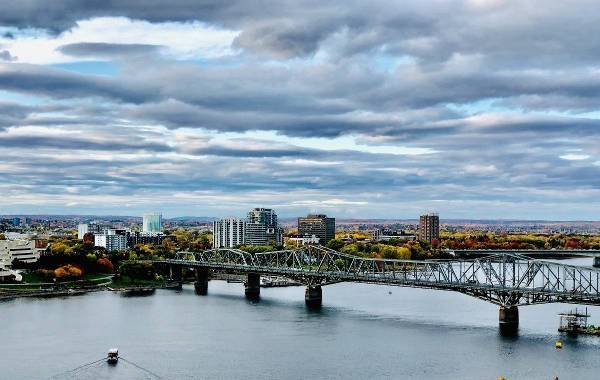
Top Attractions
Ottawa brims with must-see sites. Parliament Hill stands as the city’s iconic landmark, where you can witness the Changing of the Guard ceremony or take a guided tour inside the Parliament buildings. The Rideau Canal, a UNESCO World Heritage site, is another gem. In winter, it transforms into the world’s largest skating rink—a must-do experience. Art lovers should head to the National Gallery of Canada, home to an impressive collection of indigenous and contemporary art. For a taste of history, visit the Canadian Museum of History, which provides a comprehensive look into the country’s past.
Best Time to Visit
The best time to visit Ottawa is during late spring (May to June) and early fall (September to October). These months offer mild temperatures and fewer tourists. Winter brings the unique experience of skating on the Rideau Canal but be prepared for chilly weather.
Local Cuisines
Ottawa’s culinary scene is a delightful mix of traditional Canadian fare and international influences. Here are some must-try dishes:
– BeaverTails: A fried dough pastry shaped like a beaver’s tail, often topped with cinnamon sugar or other sweet treats.
– Poutine: Classic Canadian comfort food, featuring fries topped with cheese curds and gravy.
– Ottawa Valley Apple Cider: This locally brewed cider is a refreshing treat, especially during the fall.
– Peameal Bacon Sandwich: Also known as Canadian bacon, this sandwich is a hearty and satisfying meal.
Budgeting for Ottawa
Ottawa can be moderately priced. A night in a mid-tier hotel costs around $100-$150. Dining at a mid-tier restaurant may set you back about $20-$40 per person. For a more affordable option, consider eco-friendly hostels or Airbnb.
For more options for your digital nomad journey, check out Digital nomads in Ireland for a comparison.
5. Calgary
Calgary, a city in the Alberta province of Canada, offers a unique mix of urban life and natural beauty, making it a top choice for digital nomads looking for balance.
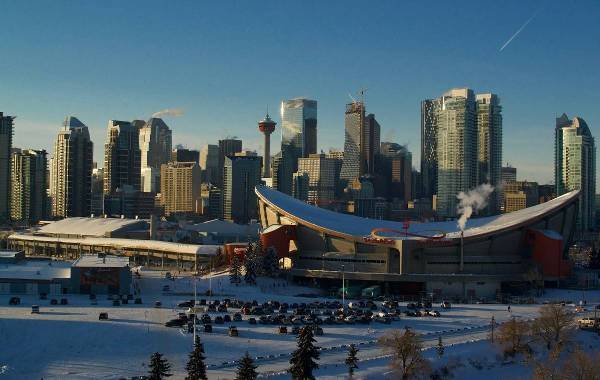
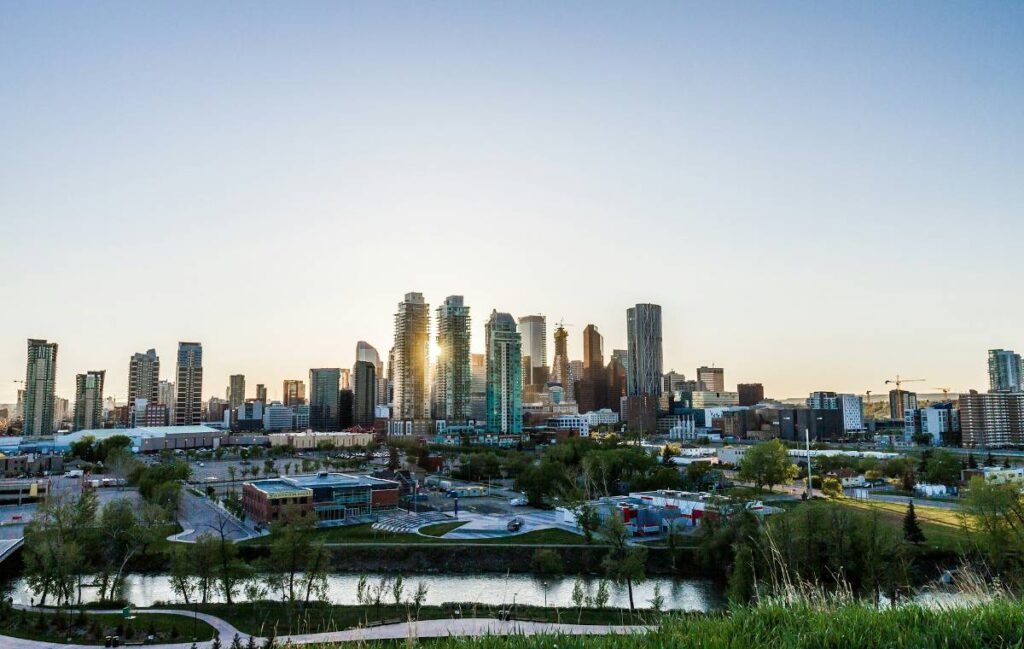
Top Attractions
Calgary is famous for its annual Calgary Stampede, a massive rodeo event drawing visitors from all over the globe. If you love nature, the nearby Banff National Park provides breathtaking scenery and endless hiking opportunities. The Calgary Tower offers panoramic views of the city and beyond, while Heritage Park Historical Village allows you to step back in time and experience Canada’s past. For arts and culture, the Glenbow Museum houses impressive exhibitions on local history and indigenous cultures. Additionally, Prince’s Island Park is a green oasis perfect for a relaxing afternoon or a scenic jog.
Best Time to Visit
The best time to visit Calgary is during the summer months, from June to August, when the weather is warm and festivals are in full swing. Winter, however, offers a different charm with its snow-covered landscapes and winter sports opportunities. Keep in mind that winters can be quite cold, so pack accordingly.
Local Cuisines
Calgary’s culinary scene is diverse, offering a mix of traditional Canadian dishes and international flavors. Some must-try dishes include:
– Alberta Beef: Known for its quality, Alberta beef is a staple in many local restaurants.
– Bison Burger: A leaner, r alternative to the classic beef burger.
– Poutine: A quintessential Canadian dish of fries topped with cheese curds and gravy.
– Calgary Ginger Beef: A local twist on Chinese cuisine, featuring crispy beef in a sweet and spicy sauce.
Budgeting for Calgary
Calgary can be moderately expensive. Expect to pay around $100-150 per night for mid-range accommodations. Dining at a mid-tier restaurant might cost you about $25-40 per meal. However, there are plenty of budget-friendly options and free activities to help you stretch your dollar.
Packing Guides and Tips
When preparing for your stay as a digital nomad in Canada, versatility is key. The weather can be unpredictable, especially if you’re considering destinations like Vancouver or Quebec City. Pack a reliable, lightweight rain jacket as the west coast is known for its rainy season, and layers you can shed or add as necessary. For the colder months, thermal wear and a sturdy, insulated jacket are non-negotiables. Remember, it’s not just about staying warm, but also about comfort when you’re hopping between cafes and co-working spaces.
On the tech front, a solid and lightweight laptop is your workhorse. Ensure you have a universal power adapter as Canada’s plug type might differ from your home country. High-speed internet is generally dependable, but a portable Wi-Fi hotspot can be a lifesaver in more remote areas. For those planning extended stays, it’s worth investing in noise-cancelling headphones for those moments when you’re working in busy environments.
Finally, don’t forget the basics for your health and wellness. Pack a reusable water bottle to stay hydrated and minimise plastic waste, and a small first-aid kit for minor emergencies. Making sure that you have insurance is always of the utmost importance. Companies like Safetywing offers some great coverage for a affordable prices. If you’re heading to outdoor havens like Banff or Halifax, a good pair of hiking boots and a day pack will make your adventures much more enjoyable. Curious about other top digital nomad spots? Consider jumping the border and becoming a digital nomad in the USA.
Concluding Thoughts
If you’re a digital nomad looking to set up camp in Canada, Vancouver, Montreal, and Calgary should top your list. Vancouver offers a great mix of urban life and breathtaking nature, making it ideal for remote work with a side of adventure. Montreal, with its arts scene and affordable living, provides an enng experience for those who crave culture and innovation. Calgary, known for its economic opportunities and stunning landscapes, strikes a perfect balance for work and leisure.
Canada’s diverse cities cater to various preferences and lifestyles. No matter if you crave the cosmopolitan buzz of Vancouver, the cultural ess of Montreal, or the economic dynamism of Calgary, you’ll find a community and lifestyle that suits your digital nomad needs. Pack your bags and make Canada your next remote work destination.
Canada’s Top 5 Digital Nomad Spots FAQ
Vancouver, Toronto, Montreal, Calgary, and Ottawa are top spots for digital nomads in Canada. Each offers a unique mix of coworking spaces, networking opportunities, and recreational activities.
The cost of living varies greatly by city. Vancouver and Toronto tend to be pricier, while cities like Ottawa and Calgary offer more affordable options without compromising on amenities and quality of life. For a better comparison, look into being a digital nomad in another cheaper country like being a digital nomad in Poland.
All major Canadian cities have excellent internet infrastructure. You’ll find high-speed Wi-Fi in coworking spaces, cafes, and most accommodations, ensuring you stay connected and productive.
Yes, many cities in Canada offer eco-friendly accommodations. Vancouver and Montreal, in particular, have a variety of green hotels and lodgings that prioritize sustainability.
Networking is quite straightforward in Canadian cities. There are numerous meetups, coworking spaces, and events specifically geared towards digital nomads and remote workers. You can also explore Singapore nomad hotspots for more international networking opportunities. Creating a soial life is always important when perfecting your work life balance.



